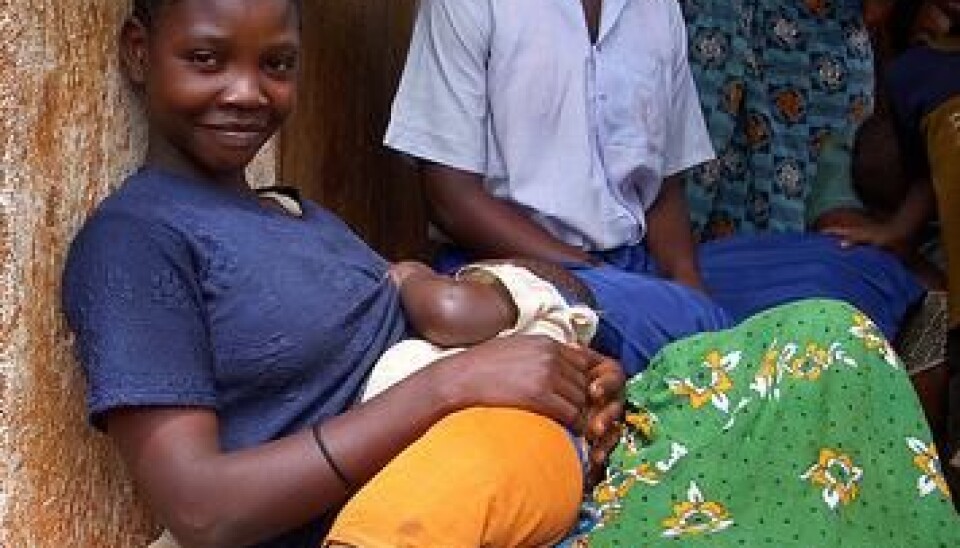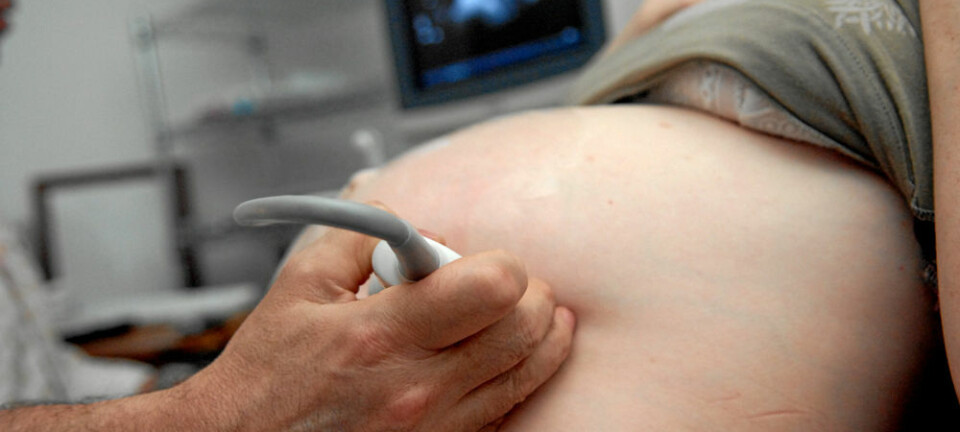
Dying women brought new life to PhD project
Observing several episodes of faulty treatment at a Tanzania hospital inspired a Danish doctor to change the focus of his PhD project.
Danish doctor Bjarke Lund Sørensen is on his way to the hospital where he is currently doing fieldwork for his PhD project about pregnancy and births in Tanzania.
It's 9 am, but the lab isn't open because no-one has showed up to work yet.
Sørensen decides to go check out the maternity ward.
What he finds there is total chaos.
I experienced five women dying needless deaths, either as a result of faulty treatment or undertreatment.
Bjarke Lund Sørensen
Three women are dying after giving birth. The local doctor has failed to show up, even though he had been called in an hour ago. And the midwives are clearly unable to tackle the situation themselves. They appear confused and helpless.
The PhD student sees no other choice but to put on a white coat and start helping one of the women who are bleeding to death after an otherwise uncomplicated birth.
Blood arrived too late
He manages to stop the bleeding with a single grip of the uterus.
The woman has lost a lot of blood in last few hours, but since nobody has showed up at the lab, she cannot get any new blood.
I found that in three out of four cases, serious errors had had been made at the hospitals – very serious errors. The deaths could have been avoided even with the limited means available at the time.
Bjarke Lund Sørensen
Sørensen does what he can to keep the new mother alive, but after three minutes she suffers a cardiac arrest.
He tries to revive her, but it turns out that the hospital’s oxygen mask is completely useless. So he decides to try an oxygen mask for babies, but it’s far too small.
He receives help to give the women CPR, and after a while he’s handed a single sample of blood from the lab, but the blood is cold and lumpy and cannot be used. And this is where the resuscitation attempt is stopped.
Next up for the PhD student is the job of conveying the news of the tragic death to the woman’s husband and their two little girls, who are dressed up because they were expecting to go in and congratulate the mother and the newborn child.
We managed to halve the number of women who bled too much after giving birth, from one in three to one in six.
Bjarke Lund Sørensen
Upon hearing the news, the husband bursts into tears and collapses onto the floor. The girls start running around, screaming and tearing down the hospital laundry from the clothesline.
“It was simply awful,” Sørensen tells ScienceNordic in a sad voice.
After a few minutes, the long-due doctor arrives and hears that the woman has died.
Throwing out his arms, he says: “Well, this is Africa.”
The woman could and should have been saved, had the circumstances been a bit closer to ideal.
For insance, if the midwives had known that they don’t need expensive tools to provide first aid to women who have common complications after giving birth, e.g. a uterus that doesn’t stop bleeding.
Having observed this woman’s death and several similar incidents, Sørensen called his PhD supervisor with a wish to change the focus of his PhD thesis.
Women die in hospitals
Sørensen, who is currently training to be an obstetrician at Denmark’s Roskilde Hospital, had travelled to Tanzania to investigate why around 13,000 women die as a result of pregnancy or birth every year in Tanzania.
“Mine and many other people’s theory was that the problem was rooted in the fact that half of the women gave birth at home,” he says.
“But what I found was that the majority of the women who died gave birth in the hospitals. I experienced five women dying needless deaths, either as a result of faulty treatment or undertreatment. It was strange because by African standards, Tanzania has a reasonably well-equipped health system.”
This contrasted with the perception of authorities and health professionals who were of the opinion that women die from childbirth and pregnancy because they don’t go to the hospital.
“A lot of energy is spent on explaining that the many deaths are the women’s own fault because they don’t go to the hospital,” says Sørensen. “But when they do go to the hospital they receive faulty treatment.”
Three in four deaths caused by serious errors
Sørensen changed his PhD project into a study of the medical preparedness surrounding the numerous deaths among mothers on maternity wards in Tanzania (see link below this article).
He studied 68 records of cases in which women had died after childbirth.
“I found that in three out of four cases, serious errors had had been made at the hospitals – very serious errors. The deaths could have been avoided even with the limited means available at the time."
Knowledge of first aid was lacking
The doctors and midwives were found to lack knowledge of some very basic emergency obstetric care (EmOC) principles.
“The medical staff often didn’t know how to perform some very simple procedures, for instance how to stop uterine bleeding,” says Sørensen.
He knew of examples where maternal mortality had decreased by up to 70-80 percent simply by focusing on ensuring preparedness in birth complications.
”Then I got the idea to start up a course in EmOC for the hospital staff.”
Course halved the number of bleeding women
The Danish doctor knew of an American course called Advanced Life Support in Obstetrics (ALSO), which had proved effective in the US:
The course normally costs around $1,000 per patient, but Sørensen was granted free use of the license in Tanzania.
“We managed to halve the number of women who bled too much after giving birth, from one in three to one in six,” he says.
“In other common birth complications, the effect was a bit more questionable.”
He adds that the health staff were very happy with the course. Rather than being criticised for their working methods, they were given specific tools.
The study of the preparedness in Tanzanian hospitals and the effect of the ALSO course has formed the basis of Sørensen’s PhD thesis, which he defended last summer at Copenhagen University
Mobile phones teach basic emergency obstetric care
He has since worked on improving and assuring the quality of the ALSO course by adapting it to the conditions in the Tanzanian hospitals. The course has now been used in 30 health facilities in Tanzania.
Another challenge lies in bringing this information about EmOC out to health centres in inaccessible places.
To that end, the researcher has put three measures in place:
- The health staff are being taught EmOC just prior to finishing their exams, so that they can apply this knowledge in their new workplace
- The course is offered in an e-learning format on mobile phones
- Doctors Without Borders is working in the most inaccessible places. Together with Sørensen, the organisation is teaching the locals basic emergency obstetric care.
Parallel to his EmOC project, Sørensen is currently training to become a gynaecologist in Denmark. His work still focuses on childbirths in the developing world. He wishes to work half-time in this field when he has finished his specialist training in obstetrics.
Sørensen's research was presented at a conference about mother-child health in low-income countries held at the National Hospital of Denmark.
-------------------------------------
Read the Danish version of this article at videnskab.dk
Translated by: Dann Vinther









